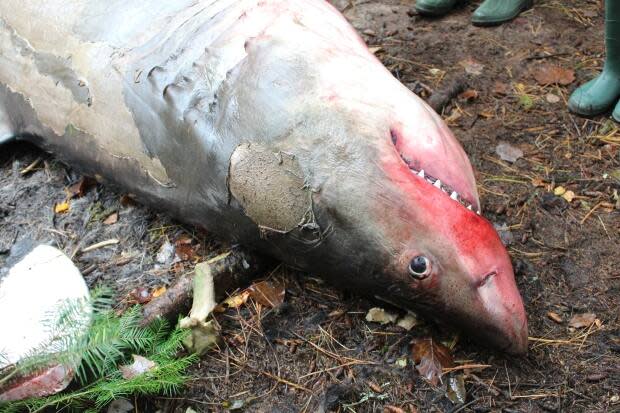Why did a great white shark wash up on a N.B. beach?
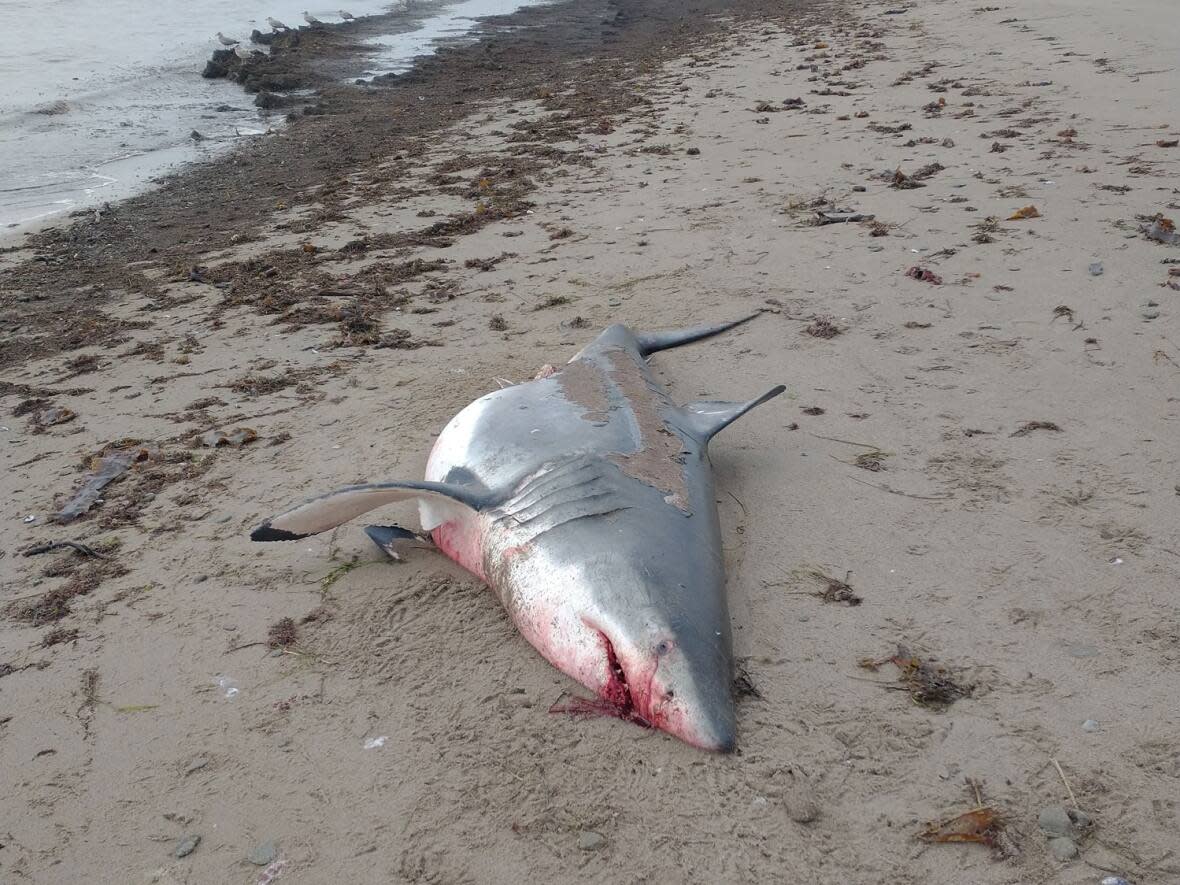
Seagulls had already started picking at the carcass when Kouchibouguac National Park officials arrived to move the great white shark off a beach on Sunday.
The shark has been discovered earlier that day, washed up dead with blood pooling under its mouth.
The Marine Animal Response Society was contacted and worked with park staff and the Department of Fisheries and Oceans to move the shark into the park's woods.
"The carcass was secured by Parks Canada and put in their compound overnight," said DFO spokesperson Krista Petersen in an email. "A technician from the team (Canadian Atlantic Shark Research Laboratory) will conduct a necropsy."
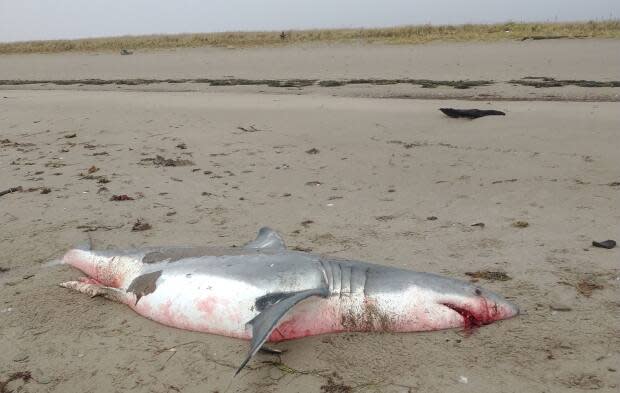
On Monday morning, Warren Joyce made the trip from the Bedford Institute of Oceanography in Dartmouth, N.S., to conduct that necropsy. It's only the third great white shark found beached in the 23 years he's worked as the lead technician with the shark unit at DFO.
"It's very rare that one washes up ashore like this," said Joyce.
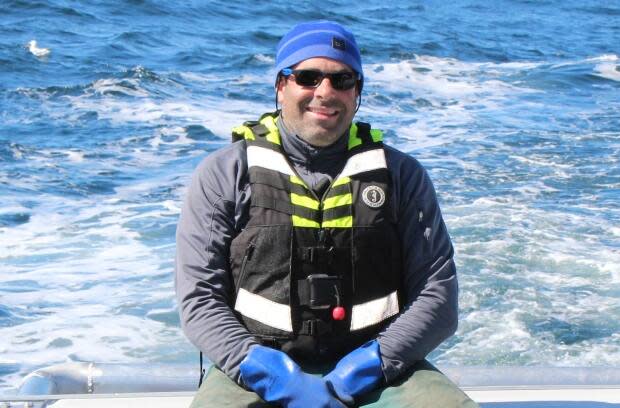
Joyce made the three-and-a-half hour trip to try to determine how it died, working alongside several biologists from the Marine Animal Response Society(MARS).
"It's a large shark," said Joyce. "But in the scientific community we refer to them simply as white sharks, not great whites."
Here's how the necropsy unfolded.
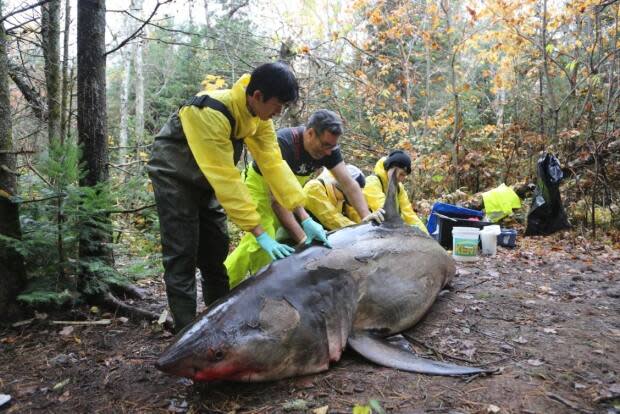
Measurements showed the shark at 3.4 metres in length (11.3 feet) and 394 kilograms in weight, or roughly 869 pounds.
After taking those measurements, Joyce said the team started to look for physical signs on the carcass for clues as to what might have killed the animal.
In addition to the seagulls starting to pick it apart, Joyce said he believes someone may have tried to take a trophy from the washed-up shark.
"I don't know if anybody took a tooth or anything like that," said Joyce. "It seemed like someone did remove one of its pectoral fins, one of its side fins, but they left it with the carcass."
No signs of trauma
White sharks are classified as endangered under Canada's Species at Risk Act. That prevents people from touching the sharks, even when they're dead. Collecting trophies or taking any part of an endangered animal carries stiff penalties.
"It can be certainly in the hundreds of thousands of dollars fines and possible jail time," said Joyce.
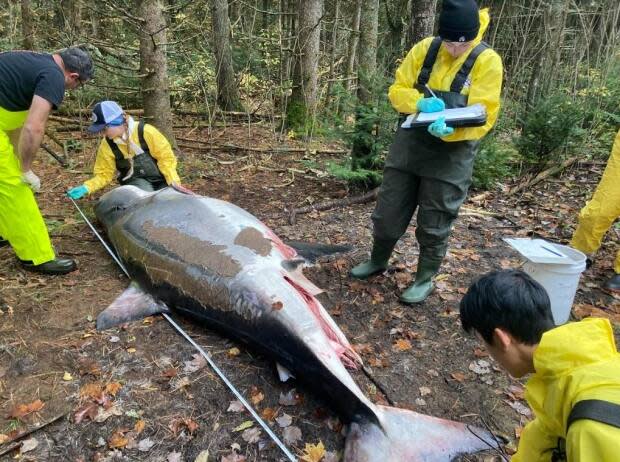
Joyce says neither he nor MARS could find any obvious signs the shark was caught in fishing gear or nets. He also said there are no signs of trauma that could be linked to a ship strike.
"But there was some abrasion on the skin on both the right and left side of the skin, possibly from being washed around in the waves on the sandy beach," said Joyce.
The blood that was photographed coming from its mouth is typical for an animal that recently died, and not a clue as to how it died, he said.
Looking at the shark's insides Joyce determined that all of its organs, including its heart, were in good shape. And its stomach was full.
"It had eaten some form of marine mammal," said Joyce. "It might have even been something like a harbour porpoise. There was some large chunks of definitely marine mammal tissue."
All signs point to the mature male shark being healthy before it died.
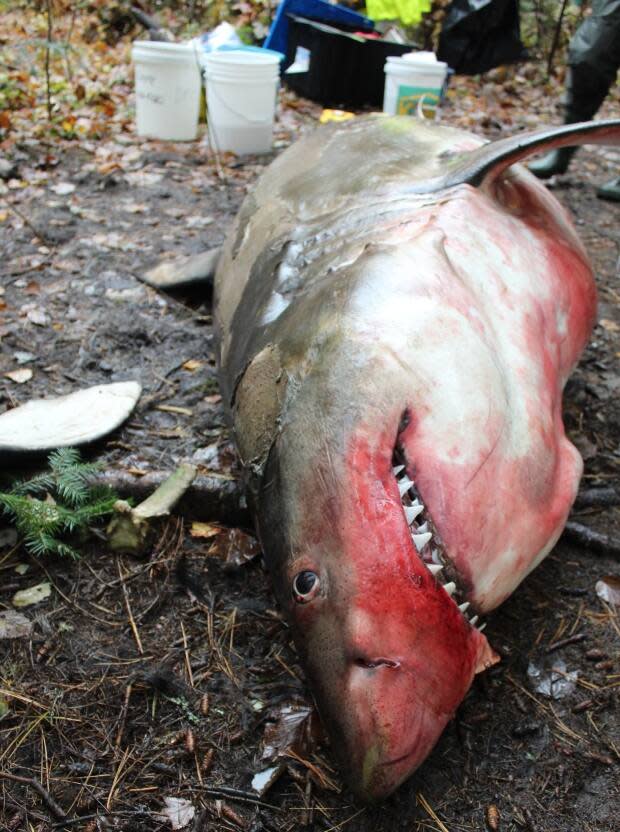
With the necropsy complete, Joyce can't say with certainty how this shark died. But after talking with colleagues, he said they do have a theory.
"I know there's lots of seals in the area of the park, and there's lots of shoal water and sandy shoals as well," said Joyce.
"It might have actually been an accidental stranding where the shark was possibly coming in to feed on seals, so it's quite possible that it came in a little too close, gets stranded and basically just suffocated."
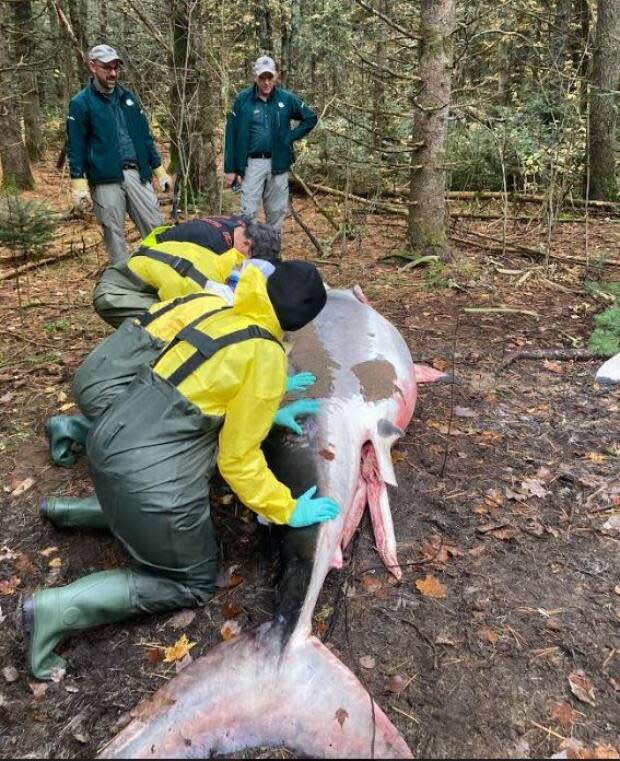
Despite the photos of the shark generating a fair amount of buzz online, Joyce says these large sharks are not new to the Maritimes.
"We have records of them going back in Atlantic Canada so like the 1800s, they've always been up here," he said.
But what they don't have is a good idea of how many there are. He says there's ongoing research to try and get a population estimate, but he suspects that the increase in shark sightings is mostly due to more people being on the ocean and along its shores than ever before.
"There's thousands of sharks out there," said Joyce.
Members of the public who encounter stranded or distressed marine life can contact MARS at 1-866-567-6277.
